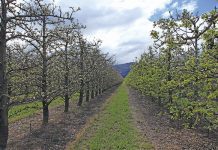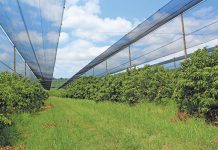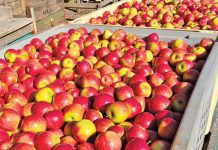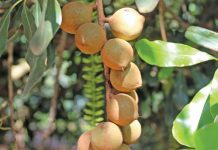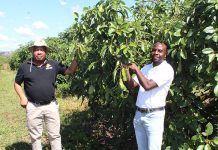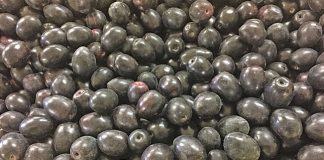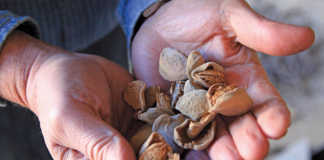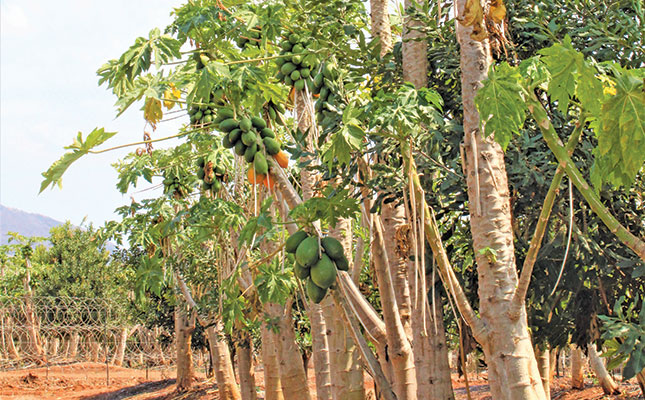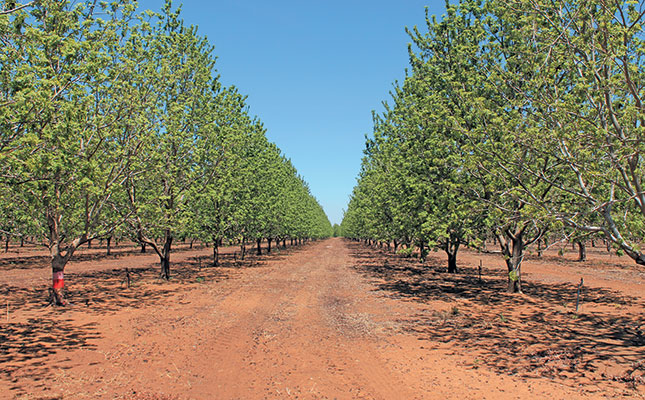
In 2000, Dries Duvenhage decided to plant 1ha of pecan nuts on his 125ha farm Terre Donne, loosely translated from French as ‘healthy earth’.
It was a bold move, as pecan trees begin yielding an economically significant crop only from eight years onwards.
Since then, Dries has expanded his orchard, and today Terre Donne has nearly 75ha planted to pecans.
He is also a partner in the company Nensis Nuts. Between his own farming operation and Nensis Nuts, he manages the production of about 150t of pecan kernels per season.
“To farm pecan nuts is a challenge because it takes about eight years to see a return on your investment. You must have a cash crop or alternative source of income to see you through in the meantime,” cautions Dries.
In addition to pecans, he farms cash crops under irrigation in a rotation cycle consisting of maize, then barley or peanuts, followed by a five-year lucerne cycle.
The motivation behind Dries’s transition to pecan nuts was the small profit margin earned on cash crops. After some research, he decided to invest in pecan nuts.
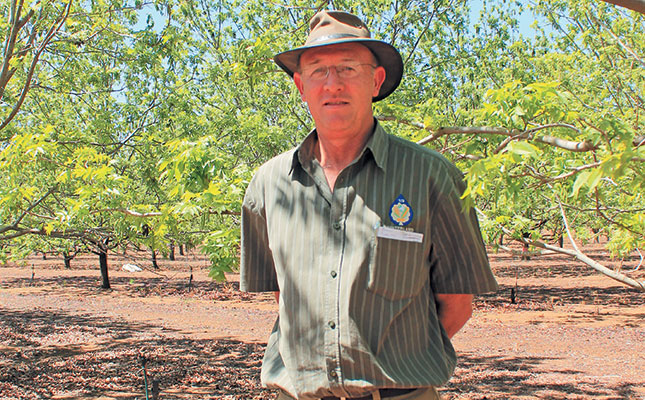
“The Hartswater area is perfect for producing [good] quality pecan nuts. You want really nice, hot and dry summers, and cold winters, for which the Northern Cape is renowned,” he explains.
The water requirements of a pecan tree are very high. According to Dries, a mature tree can easily consume 600ℓ of water per day at the peak of summer. The water used for irrigation comes from the Vaalharts Irrigation Scheme – the largest in South Africa – with Hartswater at its centre.
Optimal orchard design for sunlight
Orchard design is very important. Dries plants his pecan trees at a spacing of 10m x 10m for maximum sunlight exposure. The trees are cross-pollinated, and to ensure adequate pollination, he plants four rows of cultivars that produce bigger pecan nuts, followed by two rows of a different cultivar, which ensures good cross-pollination.
When Dries chooses pecan cultivars, the main focus is on high-yielding cultivars that produce larger nuts and has a soft shell.
“The latter is very important to Chinese [consumers],” Dries says.
Pruning and harvesting
Correctly pruning and hedging an orchard is also important since it results in branches being optimally spaced, thus allowing adequate sunlight into the orchard. Pecan trees can grow very big and alternate bearing is a problem in some cultivars.
Tree size therefore needs to be managed to balance the tree’s vegetative section (leaves and branches) with the root system.
“Hedging usually takes place in winter, just after harvesting, and is done mechanically,” says Dries.
It is also important that rows are wide enough to accommodate the machinery used during harvesting – which runs from April to July, depending on the cultivar.
“We use a mechanical shaker which shakes the nuts off the tree. The fallen nuts are mechanically swept into windrows to ease collection, which is also done by a mechanical harvester,” explains Dries.
Labourers are, however, required to pick up the nuts the harvester has missed. Each cultivar is harvested separately.
Biological methods
As far as possible, Dries tries to make use of biological farming methods.
“We do not spray insecticides. We rather make use of natural predators, such as ladybirds and lacewings, to control insects in the orchards,” he says.
Bat houses have also been installed throughout some of the orchards to attract bats, which feast on insects at night.
Although insect infestations in the orchards are limited, Dries says that if he has to single out a culprit, it would be the stink bug.
To provide a habitat for natural predators, he maintains a cover crop of natural grass between the rows.
He applies a fungicide in the orchards to prevent diseases such as anthracnose. This is done in conjunction with a foliar feeding programme which supplies trees with all the necessary micronutrients such as zinc, and is applied at the first sign of leaves appearing, from October onwards.
Many research studies are, however, being conducted by the South African Pecan Producers Association (SAPPA) on methods of controlling fungal diseases in pecan nut orchards, he says.
One of the biggest problems Dries currently experiences is theft. He attributes this to the current high prices achieved for pecans (between R70/kg and R90/kg), and the lack of job opportunities in the area. Weather conditions also pose a major challenge to pecan nut farmers.
“Hail, especially, is a big problem because it damages the trees and knocks off the nuts. In 2014, I experienced yield losses of 21%. Last year they amounted to 11%,” he recalls.
To date, the countrywide drought has not had a particularly detrimental effect on production, but a 20% restriction on water consumption for irrigation was recently imposed in the Vaalharts Irrigation Scheme.
Pecan tree nursery
As part of the Nensis Nuts company, a pecan nut tree nursery was established in 2002.
“At that time, we experienced a shortage of some commercial pecan cultivars due to the [rapid] growth of the industry. In the past 15 years, we’ve seen enormous growth in the industry. That was what motivated us to start cultivating our own plant material,” he says.
The small nursery soon expanded into a business that currently sells between 25 000 and 30 000 trees a year and employs 25 workers for the planting and care of the yearlings, as well as grafting these onto mature trees.
Export market
According to Dries, there is great demand for SA pecan nuts in China, and that country is the main export market. The nuts-in-shell (NIS) market in China has seen extensive growth since 2007.
“Since then, about 90% of our whole NIS [production] has been exported to China, where [consumers] crack the shells and soak the nuts in different flavourings, before eating them as a snack. As the SA harvesting season coincides with Chinese New Year celebrations, it means the local industry can supply them with fresh nuts during this period of high demand.”
Nut prices are quoted in US dollar and the current weak exchange rate greatly favours local pecan producers – making the waiting period worthwhile, he says.
For more information, email Dries Duvenhage at [email protected].


